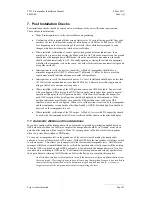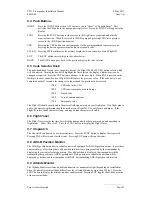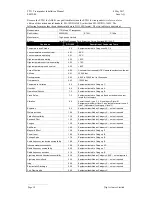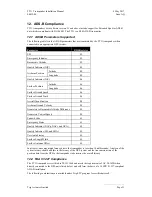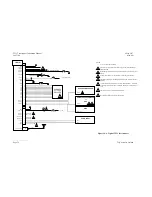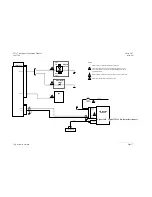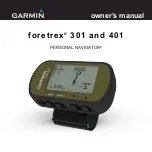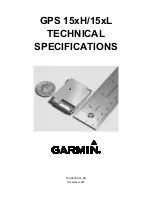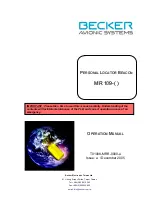
TT31 Transponder Installation Manual
8 May 2017
00455-00
Issue AQ
______________________
Trig Avionics Limited
Page 23
7. Post Installation Checks
Post installation checks should be carried out in accordance with your certification requirements.
These checks should include:
•
Mode S interrogations to verify correct address programming.
•
Verification of the reported altitude using a static tester. For aircraft using parallel Gray code
encoders, the test should include a range of altitudes up to 6,800 feet, 14,800 feet or 30,800
feet, depending on the service ceiling of the aircraft – these altitudes correspond to code
changes which are not otherwise tested at lower altitudes.
•
Where installed, verification of correct squat switch ground/airborne indications. In an
aircraft with a squat switch, setting the Mode switch to ALT when the aircraft is on the ground
should leave the transponder in GND mode; when the aircraft becomes airborne, the mode
should switch automatically to ALT. Manually opening or closing the switch as appropriate
will allow the transponder test on the ramp. See below for discussion on automatic air/ground
using other methods.
•
Interrogations to verify the receiver sensitivity. A Mode S transponder should have a
minimum triggering level (MTL) of between -77 dBm and -71 dBm. Failure to meet this
requirement usually indicates antenna or coaxial cable problems.
•
Interrogations to verify the transmitted power. A Class 1 installation should have no less than
125 Watts at the antenna (and no more than 500 Watts). Failure to meet this requirement is
also generally due to antenna or wiring issues.
•
Where installed, verification of the GPS position source and ADS-B outputs. In an aircraft
with a configured GPS, pressing the FUNC button on the transponder front panel in normal
operation will display the ADS position monitor. With the aircraft outside the hangar (for
good GPS reception) the aircraft position should be displayed on the transponder. If the
position indications are all dashes then either the GPS position is not valid or the GPS
interface is not correctly configured. Whenever a valid position is received by the transponder
and the transponder is in any mode other than Standby, ADS-B Extended Squitters should be
observed on the transponder test set.
•
Where installed, verification of the TIS output. A Mode S test set with TIS capability should
be used; with the transponder in ALT mode traffic should be shown on the attached display.
7.1 Automatic Air/Ground Considerations
If you have configured the transponder with an automatic air/ground determination method based on
GPS data with or without an Air Data Computer the transponder should be in “Ground” mode when
parked on the ramp and will not reply to Mode A/C interrogations or Mode S all-call interrogations
when the system has switched to GND mode.
To carry out a transponder test on the ground one of the easiest ways of making the transponder
airborne is to turn off the attached GPS receiver. Without GPS data the transponder will always switch
to airborne mode. This allows you to complete all the conventional transponder tests. ADS-B status
messages will also be transmitted and can be verified, but position and velocity reports will be missing.
When the GPS is switched on and a GPS position fix is first obtained, the transponder waits for a few
seconds before switching to GND mode. It will transmit airborne position and velocity squitters for a
short period before returning to GND mode, and this will allow you to complete the ramp test.
An alternative solution is to temporarily turn off the automatic air/ground determination from
the setup mode. We strongly discourage you from using that method because it has resulted in
the aircraft being despatched with the automatic air/ground still turned off – it is easy to
forget to reinstate the air/ground system after completing the tests.















